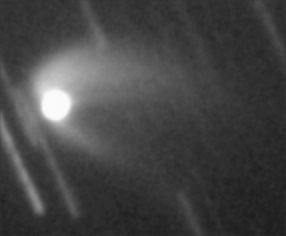Discovery date 21 February 1906 Observation arc 110.06 yr (40199 d) Sidereal rotation period 16 hours | MPC designation 596 Scheila Discovered 21 February 1906 Asteroid group Asteroid belt | |
 | ||
Discovered by August KopffHeidelberg (024) Minor planet category Main-belt AsteroidMain-belt comet Aphelion 3.4107 AU (510.23 Gm) (Q) Similar Comet Elst–Pizarro, 166P/NEAT, 44P/Reinmuth, 34D/Gale, 94P/Russell | ||
Asteroid 596 scheila when worlds collide
596 Scheila is a main-belt asteroid and main-belt comet orbiting the Sun. It was discovered on 21 February 1906 by August Kopff from Heidelberg. Kopff named the asteroid after a female English student with whom he was acquainted.
Contents
Overview
On December 11.4 2010, Steve Larson of the Catalina Sky Survey detected a comet-like appearance to asteroid Scheila: it displayed a "coma" of about magnitude 13.5. Inspection of archival Catalina Sky Survey observations showed the activity was triggered between 2010 November 11 and December 3. Imaging with the 2-meter Faulkes Telescope North revealed a linear tail in the anti-sunward direction and an orbital tail, indicative of larger slower particles.
When first detected it was unknown what drove the ejecta plumes. Scheila's gravity is too large for electrostatics to launch dust. Cometary outgassing could not be ruled out until detailed spectroscopic observations indicated the absence of gas in Scheila's plumes. Observations by the Hubble Space Telescope and the Swift Gamma Ray Burst Mission's UV-optical telescope make it most likely that Scheila was impacted at ~5 km/s by a previously unknown asteroid ~35 meters in diameter. In 2010, the Hubble Space Telescope observed the aftermath of a catastrophic collision that destroyed the much smaller asteroid P/2010 A2. Each asteroid the size of Scheila might be hit by an impactor 10–100 meters in diameter approximately every 1000 years, so with 200 asteroids of this size or bigger in the asteroid belt, we can observe a collision as often as every 5 years.
Scheila last came to perihelion on 2012 May 19.
